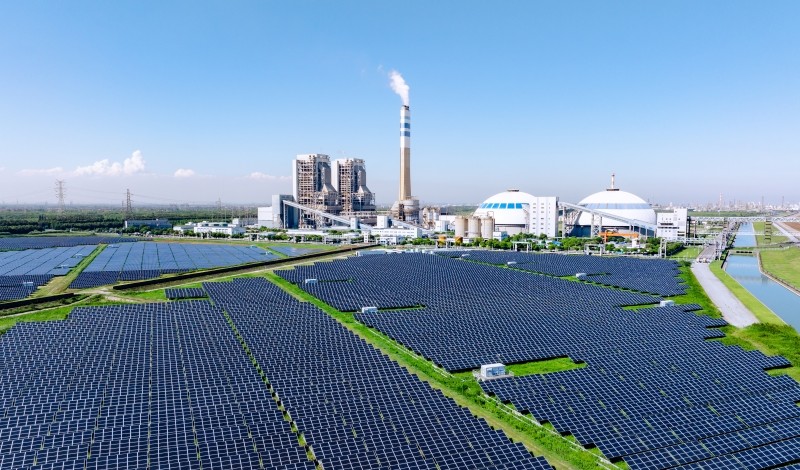Regulatory Strategies for Decarbonizing Urban and Corporate America
January 5, 2025

State initiatives and regulations can fill the incoming Trump Administration’s climate leadership gap.
The incoming Trump Administration may cut federal environmental regulatory power, and it is legally possible for the White House and Congress to claw back unspent Inflation Reduction Act (IRA) funds. Both actions would have immediate implications for climate action in the United States. In light of reduced federal involvement, state and local regulators can serve as stronger levers for environmental action.
Strategic combinations of regulatory mandates and financial incentives or subsidies—the stick and the carrot—are core tools for state and local authorities to achieve climate successes. Although the Trump Administration may seek to repeal unspent IRA funds, there is hope. In a study published this year in Energy Research & Social Science, Thomas P. Lyon, Joshua P. Newell, and I found that between 2010 and 2019, state-level incentive programs funded by local governments were effective at driving corporate facility-level decarbonization across the United States. This was particularly true when the incentive programs were combined with regulations, because this makes corporate compliance with climate regulations more affordable.
State and city climate regulatory policies—such as climate action plans, build energy standards and renewable portfolio standards—had a strong impact. Financial incentive programs for commercial energy efficiency, including grants, rebates, tax credits, and Property Assessed Clean Energy (PACE) programs, had the strongest impact of any single lever. While internal corporate decarbonization efforts alone had the weakest impact, incentives strengthened the GHG-reducing efficacy of these internal efforts, suggesting that incentives are instrumental for unleashing the potential of public-private efforts. These impacts were most effective in the form of climate policy mixes, or regulations paired with incentives, which reduces the cost of compliance, and allows firms to decide to implement their first voluntary decarbonization initiatives or to expand existing ones.
These findings echo those made by a recent study, which shows that climate policy mixes were instrumental in helping nations achieve major greenhouse gas reductions over the past two decades. That our study suggests the same is true at the state and local levels will be particularly important during the next Trump Administration, as states and cities prepare for the absence of federal leadership once again.
The role of financial incentives is crucial. PACE financing, for example, is a financial instrument that allows businesses to pay up-front costs for decarbonization and pay back the difference through property taxes. When Inside Climate News covered our study, it interviewed several business owners about the utility of such incentives, with one hotel owner indicating that the Wisconsin PACE program allowed their business to spend more on energy efficient upgrades than it otherwise would have. Incentives thus can significantly defray the high costs businesses incur for decarbonization, while also allowing them to expand the scale of these efforts. Contrary to popular belief, many of the largest corporations do not have unlimited decarbonization budgets, which is why a little incentive can go a long way.
Financial considerations can be instrumental in determining the outcomes of environmental legislation. Although voters in Washington state recently preserved the Climate Commitment Act, which established a cap-and-invest program in Washington State, they also voted to approve ballot measure Initiative 2066, which preempts local restriction of natural gas—a common component of climate policy—in order to protect access to natural gas. Voters approved Initiative 2066 due to the unfounded belief that the initiative would protect homeowners from costly mandatory conversion to all electric. Hence voters, even if under a misapprehension, respond to financial factors. This is all the more reason for financial incentives to be paired with regulatory policy.
More can be achieved by pairing incentives with regulations, as the approaches are complements rather than substitutes. In other words, climate carrots and sticks strengthen one another. One study found that subsidies, tax credits, and other incentives often serve as the foundation for strong regulations that came after it. Conversely, strong regulations can serve as a foundation for the introduction of and corporate use of incentives, as firms aim to reduce the costs of complying with regulations. Neither regulation nor financial incentives is a panacea on its own, but when used together, each has the greatest potential to decarbonize corporate America. As regulators strategize to fill climate leadership gaps they expect to see during the Trump Administration, state and local action will become instrumental.
So, what is the strategy? Regulators from red states in particular should lobby the Trump Administration to keep IRA funds because it is simply good business. Even if we leave the environmental benefits out of the equation, we would still be left with increased profitability from energy cost reductions enabled through energy efficiency gains and incentives. In the meantime, as the Sabin Center for Climate Change Law advises, local governments should seek to finalize grant contracts that are still under negotiation before January 20, 2025, as it will be more difficult for agencies under the Trump administration to get out of grant commitments they made in contract.
State and local regulators should also prioritize using regulatory and financial tools in tandem to fill the upcoming federal climate leadership gap from the bottom up. One strategy is to implement more stringent building decarbonization measures while also providing building-focused incentive programs to reduce the cost of compliance. An exemplar is New York City’s Local Law 97, one of the nation’s most ambitious building decarbonization laws, which requires buildings over 25,000 square feet to reduce emissions by 40 percent by 2030 and reach carbon neutrality by 2050. While a large IRA-funded grant is helping defray implementation costs of the law, state and local governments aiming to implement similar laws will need to create incentive programs that are not dependent on federal funding. One pre-IRA era example would be New York’s former Green Building Tax Credit, which offered up to $2 million per building for buildings using alternate energy sources and solar photovoltaic systems.
Broader regulatory efforts, such as elevating the ambition of existing carbon targets and raising the stringency of renewable portfolio standards, can similarly be paired with incentive programs. Exemplars of the pre-IRA era include the California Climate Credit, which provided corporate income tax credits for the purchase and installation of solar or wind systems, and the Pennsylvania Sunshine Solar Program, which gave businesses multiple rebates for photovoltaic and solar thermal system purchases and installations. Carrots of this sort are more likely to receive bipartisan support and are more difficult to repeal than sticks, making them a strategic choice in the upcoming volatile regulatory environment.
Environmental regulations will become more vulnerable to corporate challengers. As the Union of Concerned Scientists noted, the recent overturning of the Chevron doctrine will allow oil companies to present themselves as experts and will give their opinions equal weight with agency scientists and experts whenever environmental statutes are challenged. Similarly, in 2023, Tennessee Senate Bill 1147 prohibited its cities from adopting international climate conventions or participating in related networks under the stated aegis of protecting private property rights and for the plain purpose of protecting fossil fuel interests. Countering the rising political power of oil interests in the next four years will be critical.
The same is true for monopoly utilities. For monopoly utilities, creating energy infrastructure that makes affordable renewables a public good is an effective regulatory strategy. For instance, Ann Arbor voters approved a sustainable energy utility to create a supplement to the main local utility’s grid with renewable energy at below-market rates. An experimental goal could be to harness corporate power to expand green energy. MGM Resorts International built its own solar mega-array which provides all its facilities with renewable energy, albeit after paying an $83 million exit fee from Nevada’s energy monopoly. If corporations joined forces with local governments, mega-arrays of this sort could be scaled up to public use.
To that end, regulators should also use public-private partnerships as a delivery mechanism for incentives, such as municipal-corporate partnerships of the sort being championed by the City-Business Climate Alliance, in which cities join forces with local climate-active firms to accelerate mutual climate efforts across sectors. These partnerships can provide an organized platform on which to design and mobilize effective incentives directly to the businesses most likely to use them. Hence my adage to city leaders: “don’t just regulate, collaborate.”
Harnessing the power of coalitions and networks can similarly be instrumental. For instance, the largest and oldest environmental city network, ICLEI – Local Governments for Sustainability, supplements the regulatory capacity of cities with technical resources and best practices, which helps achieve collective urban GHG reductions as well as the decarbonization of power plants within cities. Regulators at all levels should encourage and support more cities to join ICLEI, particularly smaller and resource-constrained cities, which can benefit the most from its resources.
Search
RECENT PRESS RELEASES
Related Post



